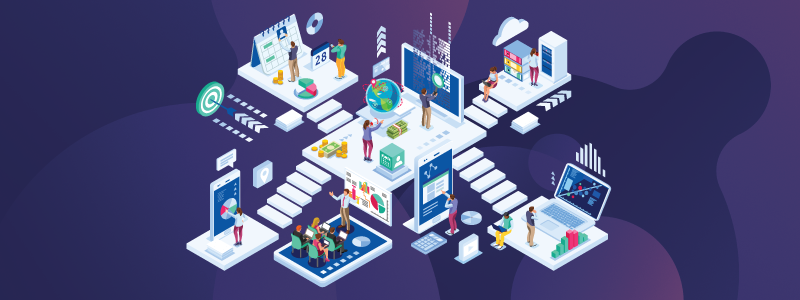A couple of months ago, I spoke on a panel hosted by Georgetown University’s McCourt School of Public Policy and the Goodfriend Group on “Work, Employment, and the ‘App’ Economy.” I learned a lot from the other panelists and was fortunate to be able to share the views of ACT | The App Association’s member companies when it comes to labor and the app economy. But perhaps the most interesting theme to emerge was how differently people view the scope of the app economy and its role in the broader economy.
Notably, I learned that many experts think of the app economy as coextensive with the gig economy (or independent contractors) and that the bulk of economic contribution by apps is as facilitators of peer-to-peer or contractor transactions. It was a reminder that there are so many different ways of scoping public policy concepts, and that the issues we care most about shape our perspectives. If your main focus is on labor, it makes a lot of sense to look closely at the emerging labor issues contractor/gig platform apps pose in the market. But it was also an excellent opportunity to share with the audience the surprising breadth of what app makers do and how diverse their offerings are beyond sharing platforms.
But Aren’t the Gig Economy and App Economy the Same Thing?
The app economy is an approximately $1.7 trillion industry employing about 5.9 million people. If there is a common business model among our member companies, it might be “white label software,” where the App Association member builds a software (and sometimes hardware) solution on behalf of a client. The work takes our member companies across virtually all industry verticals, from education and healthcare to manufacturing and environmental science. Therefore, we tend to view the app economy as a service industry focused on modernizing other industries and helping small businesses take advantage of the latest broadband-enabled technologies. The gig economy is perhaps a subset of the broader app economy—one that specializes in connecting peers to transact with one another. In fact, some of our member companies are gig platforms. For example, ZapMaid is a new member that enables home cleaning services to transact directly with their customers.
Whether our member companies facilitate gig work or rely on contractors to build software programs, the public policy issues that surround contract work are important. For example, independent contractors are eligible for some of the Small Business Administration relief funds in the recently enacted Coronavirus Aid, Recovery, and Economic Security (CARES) Act. This is good news for platforms like ZapMaid because it provides critical relief for cleaning service contractors, and it’s also good news for the independent software developers who work for our member companies as contractors.
COVID-19 and the Gig Economy
The COVID-19 pandemic has wreaked havoc on contract work, and independent workers need the CARES Act relief provisions to keep going. And yet even as relief is necessary, we now find ourselves relying more on digital platforms during the COVID-19 crisis. Many of us are now up to four or five video conferences per day. For example, use of Microsoft Teams has skyrocketed 775 percent as those of us fortunate enough to continue working are adjusting to doing so from home. Local businesses like restaurants are relying entirely on delivery apps like DoorDash to stay afloat, while fitness programs are making their offerings virtual. This means software developers are working overtime, while some contract workers are now a critical component of essential services like food and grocery delivery. In retrospect, after the crisis finally abates, we may find that it accelerated an already-existing trend toward reliance on remote work and digital services. Whatever the post-COVID-19 economy looks like, the app economy—including gig platforms—is ready for it.
